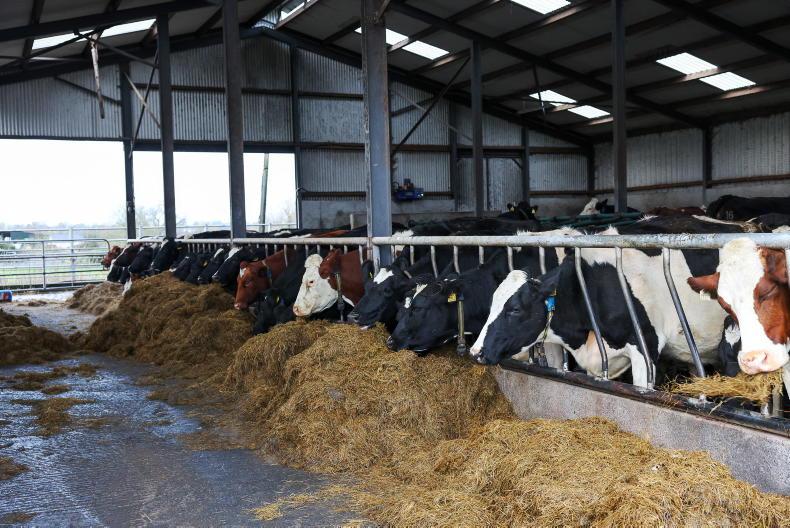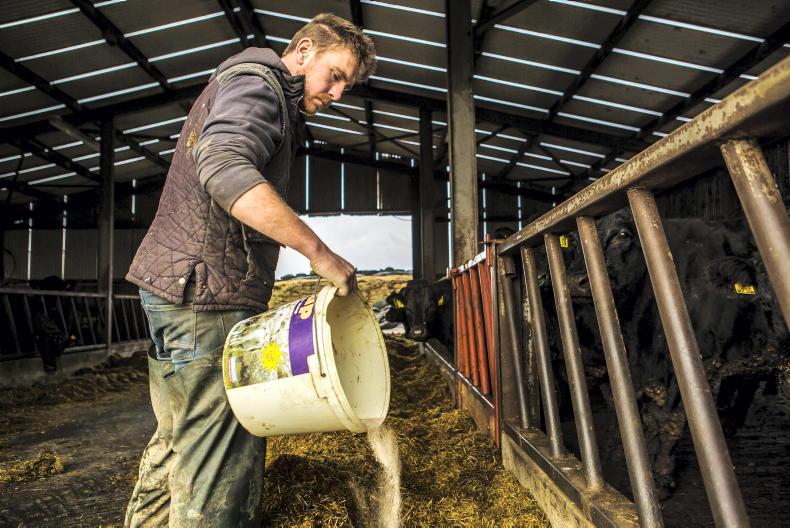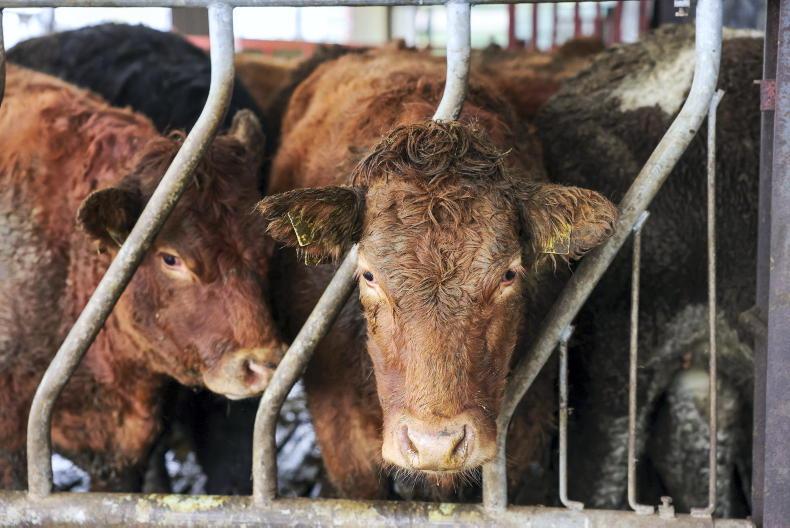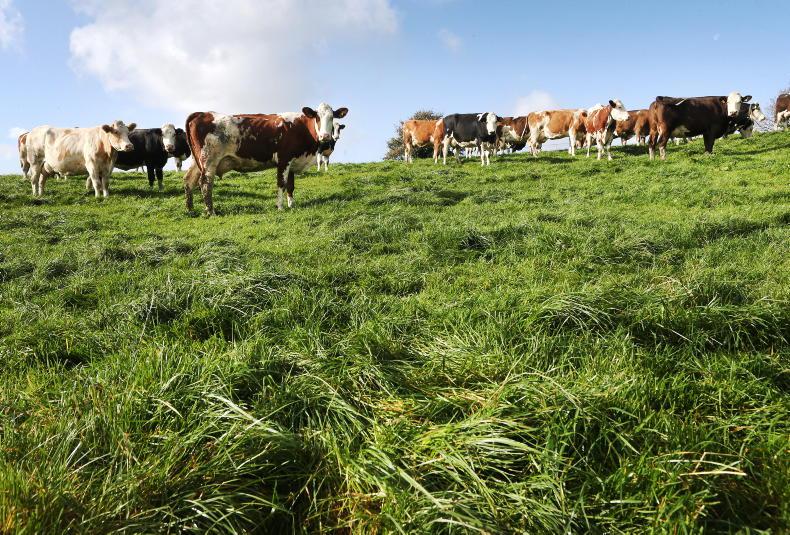Before spring calving kicks off on the majority of suckler farms, take a few minutes and think about how well the calving shed worked last year.
Where there are some issues with facilities, can they be sorted with a few alterations in the shed?
Outlined are a few such changes that may make a difference this spring.
1. Work light for caesareans
Look at the calving pens where veterinary assistance is normally given. Is the lighting adequate for those occasions a cow needs assistance or a caesarean at night?
Repositioning and upgrading lights to LEDS above the area where the cow stands when locked in the calving gate will improve visibility when assisting a cow during a difficult labour.
2. Self-filling water bowls in the calving pen
A self-filling water bowl in a calving pen is money well spent. It lets the cow drink to appetite, which could be anywhere from 20 to 30 litres of water after calving.
Filling a bucket of water and leaving it in the pen is not great practice.
Firstly, it will not provide enough water for the cow. Secondly, the cow is more likely to spill the bucket, soaking the bedding.
There is also a safety risk when entering the pen with a freshly calved cow to leave a bucket of drinking water.
More often than not, the bucket ends up being trampled and cracked. It will also become soiled and there is a drowning risk to the calf.
A self-filling bowl takes a lot of the hassle out of getting water to cows post-calving.
3. Water, hose and trigger gun
Where cows are held in individual pens post-calving without access to drinking troughs, carting buckets of water back and forward several times per day is a pain.
To cut out the hassle, fit a water tap in the shed. Attach a standard 25m or 50m garden hose on a wind-up reel to the tap.
At the water dispensing end of the hose, fit a trigger gun. This way, you can walk through the shed and offer water with the hose rather than carting buckets.
As water is only discharged when the trigger is pressed, the shed stays dry.
4. Electric water heater
Most DIY chains sell small-scale electric water boilers that are relatively inexpensive. These are small wall-mounted boilers with a thermostat and an adjustable tap for hand washing.
When calving cows, hygiene is important. Having hot water on tap is essential for washing and sterilising hands, as well as equipment, when cows need assistance.
A smaller electric heater in the shed is handier than running back and forward to the house for hot water.
The heater can also be used to mix colostrum and milk replacer for calves needing tubed or fed on a bottle.
5. Cameras
Cameras are expensive, but a great investment. Watching cows in early labour without disturbing them makes the calving process much smoother and faster.
Some cameras also have sound and night vision or rotate 360 degrees, making it much easier to watch cows at night without entering the shed.
Cameras also link to smartphones, making it possible to watch cows anywhere where there is an internet signal.
Read more
Feeding cows in the evening to delay calving at night
Calf rearing: do your budgets before you purchase
Before spring calving kicks off on the majority of suckler farms, take a few minutes and think about how well the calving shed worked last year.
Where there are some issues with facilities, can they be sorted with a few alterations in the shed?
Outlined are a few such changes that may make a difference this spring.
1. Work light for caesareans
Look at the calving pens where veterinary assistance is normally given. Is the lighting adequate for those occasions a cow needs assistance or a caesarean at night?
Repositioning and upgrading lights to LEDS above the area where the cow stands when locked in the calving gate will improve visibility when assisting a cow during a difficult labour.
2. Self-filling water bowls in the calving pen
A self-filling water bowl in a calving pen is money well spent. It lets the cow drink to appetite, which could be anywhere from 20 to 30 litres of water after calving.
Filling a bucket of water and leaving it in the pen is not great practice.
Firstly, it will not provide enough water for the cow. Secondly, the cow is more likely to spill the bucket, soaking the bedding.
There is also a safety risk when entering the pen with a freshly calved cow to leave a bucket of drinking water.
More often than not, the bucket ends up being trampled and cracked. It will also become soiled and there is a drowning risk to the calf.
A self-filling bowl takes a lot of the hassle out of getting water to cows post-calving.
3. Water, hose and trigger gun
Where cows are held in individual pens post-calving without access to drinking troughs, carting buckets of water back and forward several times per day is a pain.
To cut out the hassle, fit a water tap in the shed. Attach a standard 25m or 50m garden hose on a wind-up reel to the tap.
At the water dispensing end of the hose, fit a trigger gun. This way, you can walk through the shed and offer water with the hose rather than carting buckets.
As water is only discharged when the trigger is pressed, the shed stays dry.
4. Electric water heater
Most DIY chains sell small-scale electric water boilers that are relatively inexpensive. These are small wall-mounted boilers with a thermostat and an adjustable tap for hand washing.
When calving cows, hygiene is important. Having hot water on tap is essential for washing and sterilising hands, as well as equipment, when cows need assistance.
A smaller electric heater in the shed is handier than running back and forward to the house for hot water.
The heater can also be used to mix colostrum and milk replacer for calves needing tubed or fed on a bottle.
5. Cameras
Cameras are expensive, but a great investment. Watching cows in early labour without disturbing them makes the calving process much smoother and faster.
Some cameras also have sound and night vision or rotate 360 degrees, making it much easier to watch cows at night without entering the shed.
Cameras also link to smartphones, making it possible to watch cows anywhere where there is an internet signal.
Read more
Feeding cows in the evening to delay calving at night
Calf rearing: do your budgets before you purchase










SHARING OPTIONS